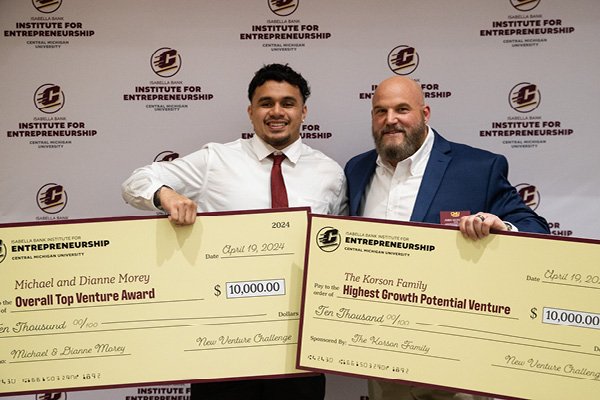
Start up
Passion. Potential. Pitches. Don't miss any of the 2025 New Venture Challenge excitement.
Tune in Friday, April 11 at 1 p.m. for great ideas and fierce competition. Then, join the judges, mentors, spectators and teams as they see who is going home with thousands of dollars in venture financing. The awards broadcast begins at 6:30 p.m. and one team will walk away as the overall best venture.
Central Michigan University’s College of Business Administration is the home of the Isabella Bank Institute for Entrepreneurship and the first Department of Entrepreneurship in the state of Michigan. We are a student-centric hub where experiential, curricular, and external entrepreneurial opportunities intersect.
Our mission is to maximize student success by fostering a campus-wide entrepreneurial mindset that promotes inter-disciplinary collaboration and the creation of new ventures.
We aim to create innovative programming, boost cross-campus and ecosystem collaboration and provide a comprehensive mentoring program.
Our institute provides extracurricular opportunities and is open to all undergraduate and graduate CMU students.
Are you interested in becoming an entrepreneur?
Every journey is unique. Explore the opportunities that interest you.
Experts on Point is a University Communications series focusing on CMU faculty who have special insights into interesting, important and timely topics.
One of the brightest comets in more than 20 years is now appearing in the night sky, and Central Michigan University Physics faculty member Axel Mellinger has captured it for all to see.

Mellinger, who enjoys photographing the night sky in his spare time, created a time-lapse video of Comet NEOWISE from 327 photos he took over 35 minutes from a parking lot on the west side of Mount Pleasant.
The comet takes its name from NASA's NEOWISE space telescope, which discovered it in March. It made a close approach to the Sun on July 3 — closer even than planet Mercury. Unlike many other comets, this one survived the Sun's intense heat and developed an impressive dust tail, along with a fainter blue gas/ion tail. For the next few days, the comet will visible to the naked eye at around 11 p.m. in the northwest sky.
Don't miss it, Mellinger advises, as it will not be back for another 6,800 years.
Mellinger joined CMU in 2008 after postdoctoral stays at the University of California, Berkeley, and the University of Potsdam, Germany. He studies electret materials and currently is the secretary of the IEEE Dielectrics and Electrical Insulation Society We spoke with him about the comet and his video.
A: Comets are "dirty snowballs" or "icy dustballs," typically a few miles in diameter and composed of dust, rocks, water ice, and various other frozen gases, such as carbon dioxide and methane. They spend most of their time in the outer parts of the solar system, but when they approach the Sun, the frozen gases sublimate, freeing the dust. This produces a giant atmosphere, called a "coma," and tails up to 100 million miles long. The gases are ionized and blown away by the "solar wind," a stream of charged particles emitted by the Sun, forming a bluish, straight ion tail. The heavier dust particles are blown outward by radiation pressure from sunlight. The dust tail often looks yellowish-orange and is slightly curved.
A: While dozens of comets are discovered each year, naked-eye comets only appear once every few years, and really bright ones are even rarer. The last "great" comets visible in the Northern Hemisphere were Hale-Bopp in 1997 and Hyakutake in 1996. You can find a list of currently observable comets at aerith.net and cometwatch.co.uk.
A: Comet C/2020 F3 NEOWISE was discovered in March 2020 by a repurposed NASA space probe, launched in December 2009 to survey the sky in the infrared spectrum. The comet orbits the Sun on a highly elliptical path once every 6,800 years. It presents no danger to Earth — even at its closest approach on July 23 it will still be 64 million miles away.
A: Since they spend most of their time in the cold, outer regions of the solar system, comets are thought to preserve the composition of the "primordial" material that the solar system was made of. This was highlighted in 2014, when the European Space Agency's Rosetta probe orbited a comet and found deuterium — a heavy hydrogen atom with an extra neutron — at concentrations three times higher than in ocean water on Earth. Therefore, the Earth's water likely was not supplied by impacting comets.
A: Comet NEOWISE is now visible in the evening sky. Don't wait too long to look for it, as it is already fading. Find a spot away from city lights with an unobstructed northwest horizon, and look in the area between the Big Dipper and the horizon (see the star chart below). The best time is around 10:30-11:30 p.m. Using a pair of binoculars or a small telescope will make the tail stand out better.
To photograph the comet, mount your camera on a tripod, since you will need exposure times of several seconds. Raise the camera's ISO setting to near maximum. Generally, DSLR cameras with their large sensors produce better images than cellphones. To create a time-lapse video, you will need to shoot hundreds of images and later combine them with video editing software.
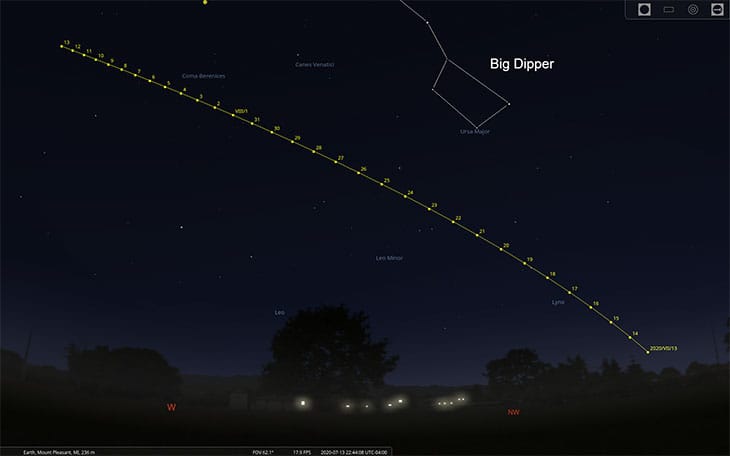

Explore special opportunities to learn new skills and travel the world.
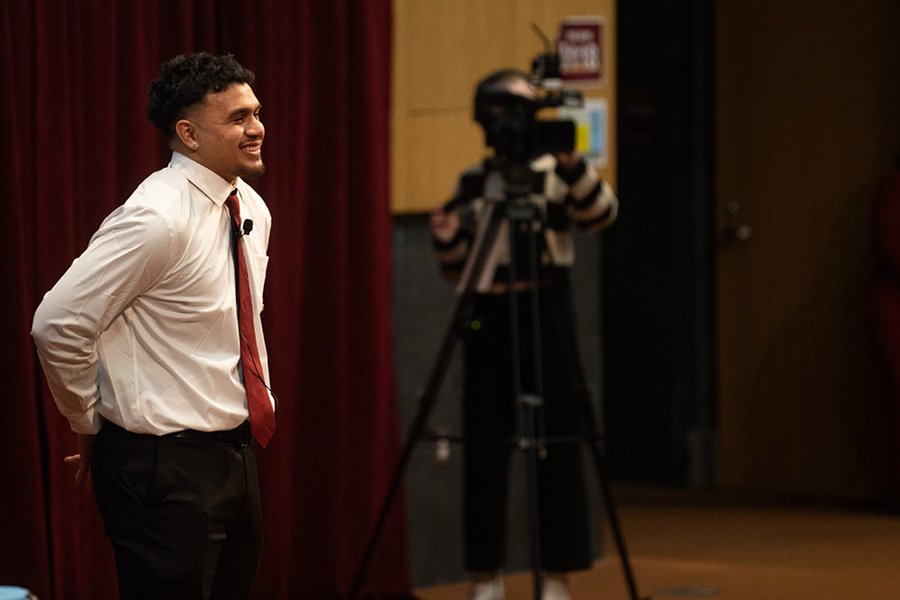
Present your venture and win BIG at the New Venture Challenge.
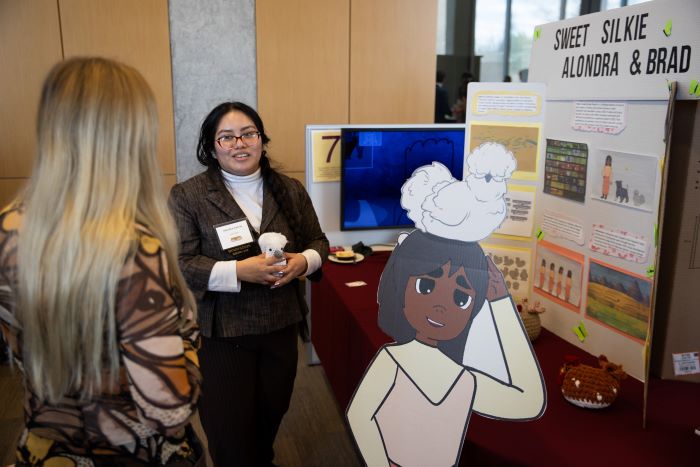
Boost your entrepreneurial skills through our workshops, mentor meetups and pitch competitions.

Learn about the entrepreneurship makerspace on campus in Grawn Hall.

Present a 2-minute pitch at the Make-A-Pitch Competition and you could win prizes and bragging rights!
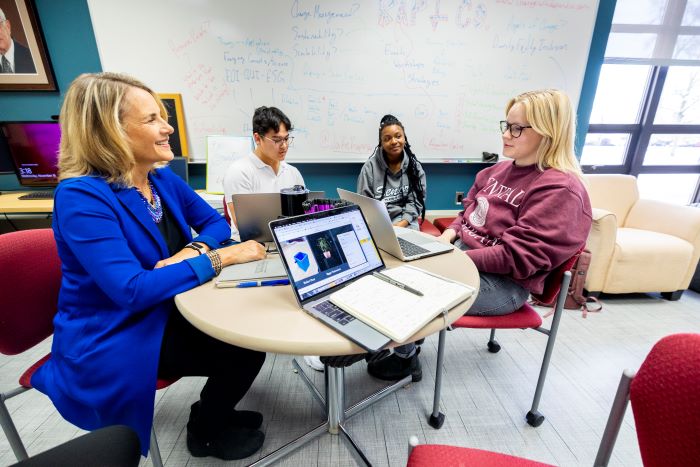
Connect with mentors and faculty who are here to support the next generation of CMU entrepreneurs.
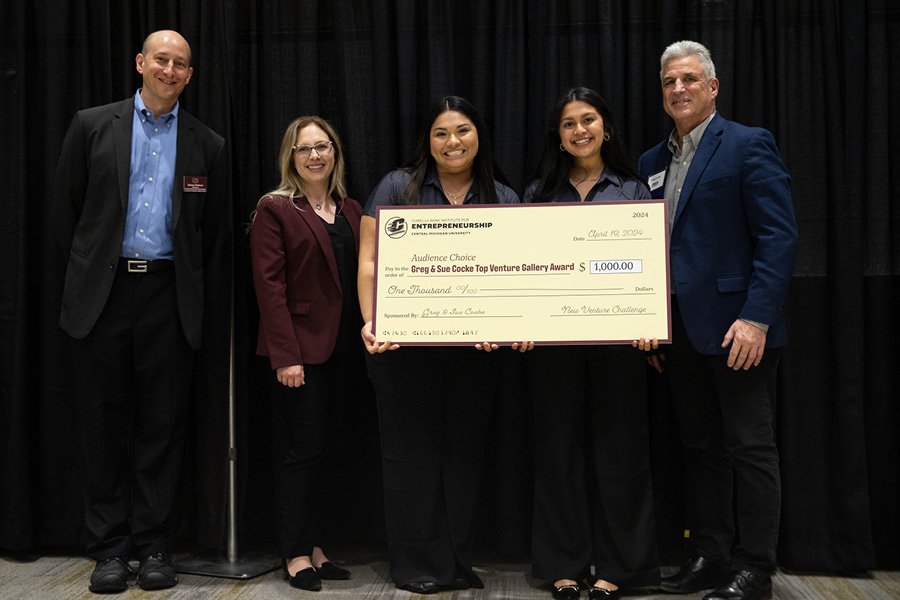
Are you a CMU alum looking to support CMU student entrepreneurs? Learn how you can support or donate to the Entrepreneurship Institute.